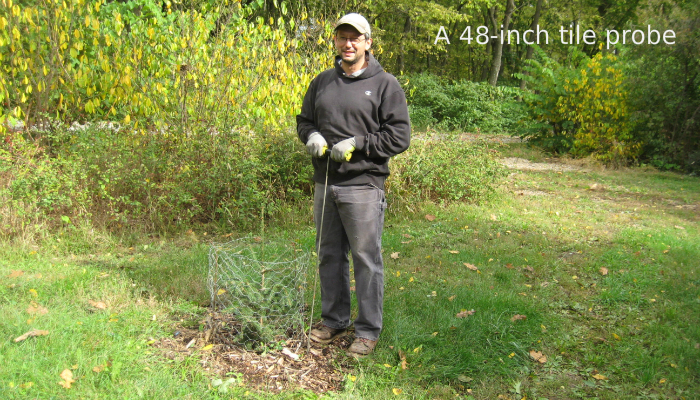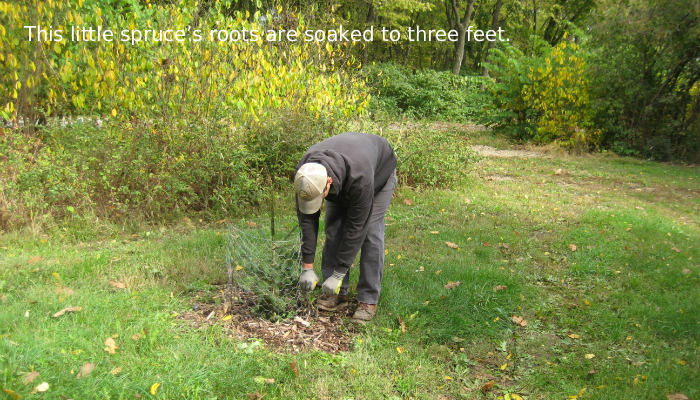Evaluating Soil and Water with a Tile Probe

A tile probe is merely a slender steel rod with a cross-tee handle. The better ones are stainless steel rods with a teardrop tip, which opens a slightly wider hole so the soil doesn’t grab the rod. For most ordinary uses, a 3/16 inch rod 48 inches long is a good choice. The better quality ones also have insulated handle grips in case you poke into a buried electric line.
With a bit of practice in our ordinary silty (loess) soils, you can distinguish moisture by the difficulty of the push – dry is impossible, damp is difficult, nearly saturated is easy, and if you hit quicksand it will nearly go into free-fall. Stones, bricks, and ceramic tile go clink when you hit them, bottles sound hollow if not broken. Roots and buried lightening rod cable will stop you but give a little, plastic tile will give a lot. Hard plastic water lines often deflect the probe tip to the side. Sand pockets feel gritty, steel pipe sounds metallic.
Because of our mini-drought this year during the second half of the growing season, I started watering young trees and shrubs, especially young conifers, which continue to transpire during winter. But then some rains returned in min-October and partially restored shallow soil moisture. So now which little trees have enough, and which don’t? Using a tile probe helps answer the question, simply by walking around methodically with it and poking it in the ground. On October 15, the trees that were both watered and rained on were an easy push to 2.5-3 feet (see photos) and when first withdrawing the tip from the bottom of the hole, there was often a little slurping sound. But for rainfall only, it was easy probing to only 1-1.5 feet, which was a huge improvement over two weeks before, but still rather skimpy for conifers heading into winter (assuming we are actually going to have one).
When soils are moist, the probe can also detect the looser soils above buried tiles and pipelines, even if you cannot reach them. They can feel leach field infiltration trenches of septic fields, both by the softer soils and then by clicking on the pebble backfill below. One can also locate old building foundations, tree roots, former wooden fence posts that have rotted off below ground line, buried water main shutoffs, all kinds of buried objects.
Should you decide that you can use one, they are sometimes available from local farm supply stores. Also always available – catalog and online – from Agridrain, and often from Ben Meadows, Forestry Suppliers, and Gemplers. So if you are serious about watering a lot of trees and shrubs, a tile probe can help you do it thoroughly without guesswork and wasting the water.


